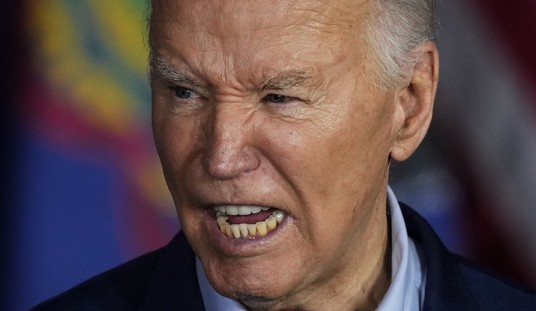Chances are if you ask an American how the economy is doing, he or she will tell you not so good.
According to a poll by the Wall Street Journal and NBC, around 76 percent of Americans do not think their children’s generation will have a better life than they do. Some 71 percent of Americans think the country is heading in the wrong direction.
In addition, seven in 10 survey respondents blamed the state of the economy more on Washington than on any deeper economic trends.
Economic growth has been accelerating and the unemployment rate has been falling. Yet, five years after the official end of the most recent economic downturn, economic growth in the U.S. has averaged only about 2 percent a year – well below its historical average of 3.4 percent.
The period following deep recessions associated with financial crises is typically distinguished by a V-shaped pattern: a sharp decline followed by an equally quick recovery. Even after the prolonged Great Depression of the 1930s, growth averaged about 10 percent in the three years following the recession.
This recovery, however, as noted by economist Michael Bordo of Rutgers University, is slower than every preceding U.S. recession with a financial crisis.
The recession and the following slow recovery have “left lasting scars on the economy,” the Labor Department concluded late last year in a report that declared slower growth “the new normal” for the American economy.
The Federal Reserve said in June that it no longer expected a full recovery in the near future. Fed Vice Chairman Stanley Fischer said recently that the factors contributing to the sluggish economy might reflect “a more structural, longer-term shift.”
Between 1950 and 2000, according to Third Way’s Jim Kessler, the annual rate of growth exceeded 3 percent a total of 34 times. Since 2001, growth has reached 3 percent just two times and did not reach 4 percent at all. Since the beginning of the recovery from the Great Recession of 2008-09, annual growth has not yet reached 3 percent.
Growth is getting harder for the U.S. economy, and there are reasons for thinking that growth rates over the next decade will fall short of the long-term U.S. historical average.
The Congressional Budget Office (CBO) recently updated its fiscal projections, and they reflected a gloomier view that the future of the U.S. economy will be characterized by slower growth.
In its most recent budget and economic outlook, the CBO foresees an average of 2.6 percent annual growth over the next 10 years.
The emerging view espoused by a wide range of economists accepts that slower growth is partly the result of long-term trends that predate the Great Recession. This view, by no means the prevailing one among economists, has sparked a debate within the economics profession about the causes of slow growth after the financial crisis.
In a recent book, Larry Summers, Paul Krugman, and Barry Eichengreen, among other renowned macroeconomists, suggest that structural changes in the global economy have ushered in a period of slow growth.
This theory, known as “secular stagnation,” posits that we have entered an era of slower growth brought on by an aging population, slowing technology expansion, and increasing income inequality.
One version of this theory, which Summers has consistently endorsed, says that a savings glut (an excess of savings over investment) has pushed the real interest rate (the inflation-adjusted interest rate) “consistent with full employment” into negative territory since the mid 2000s. Because the low demand for investment funds and the high supply of funds are not in equilibrium, the economy will experience higher than normal rates of unemployment.
Typically, interest rates are pushed downwards until savings and investment are brought into balance again. In the meantime, this fall in the interest rate spurs investment and generates growth. But with interest rates currently at or near zero, it is hard to get real interest rates down enough to provide these incentives. Hence, the economy runs at a slower pace than its full potential.
Other economists, who still ascribe to the view that anemic growth is here to stay, argue that declining rates of innovation and productivity growth have been the main contributors to slower growth.
Tyler Cowen, a professor of economics at George Mason University, has argued that the high-growth period that marked U.S. history may have been a temporary phenomenon driven by what he calls “low-hanging fruit” – cheap land, new technology, immigrant labor, and high marginal returns on education.
For much of American history, a high rate of technological innovation has lifted both the poor and the middle class by raising wages and household incomes through robust economic growth.
Technological advances from roughly the 19th century to the mid-20th century were relatively easy to produce and exploit, resulting in an explosion of living standards.
This period brought such innovations as electricity, the automobile, the airplane, basic advances in public health, among others. But by the time of the 1973 oil crisis, most of this low hanging fruit had been plucked and growth rates began to slow.
Cowen sees this fact directly tied to the innovation plateau that was reached around the 1970s. Meaningful innovation has become harder, so more resources must be used to accomplish the types of innovations that have a substantial impact on the standard of living, which means a lower and declining rate of return on technology.
For all the recent changes brought by the Internet, Robert J. Gordon of Northwestern argues, it will not deliver the profound boost to economic growth generated in other periods of rapid innovation, such as the Industrial Revolution.
“The rapid progress made over the past 250 years could well turn out to be a unique episode in human history,” Gordon said.
More recently, Cowen has argued that America is diving itself in two. At the top will be 10 percent to 15 percent of high achievers, whose qualifications and mastery of technology will allow them to climb to the top. The rest will face stagnant or falling wages. If people’s skills are a complement to the computer, their wages and employment prospects will be positive. If their skills do not complement the computer, then they will have a harder time getting by.
Most of the jobs lost during the Great Recession were medium-wage and high-wage jobs, where as most of the jobs added in the recovery have been low-wage occupations. Many of the jobs that have disappeared were in the construction, manufacturing, insurance, and real estate industries.
According to the National Employment Law Project, job growth is strongest in the service industry, and lower-wage industries have accounted for 44 percent of employment growth since 2010.
Brink Lindsey, a senior fellow at the Cato Institute, has suggested that faltering long-term growth will inevitably put more pressure on policymakers to change government policies that have an adverse effect on the economy, such as barriers to entrepreneurship, competition, and innovation. This is because a weak economy exposes bad policies to public scrutiny and increases calls for change.
“I think this substandard economic performance is going to cause feedback, in particular from the political process. People are not going to like the fact that economic growth has slowed down, they are not going to like the dimming of their economic prospects,” he said.








Join the conversation as a VIP Member